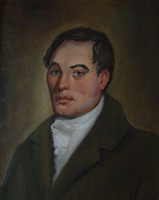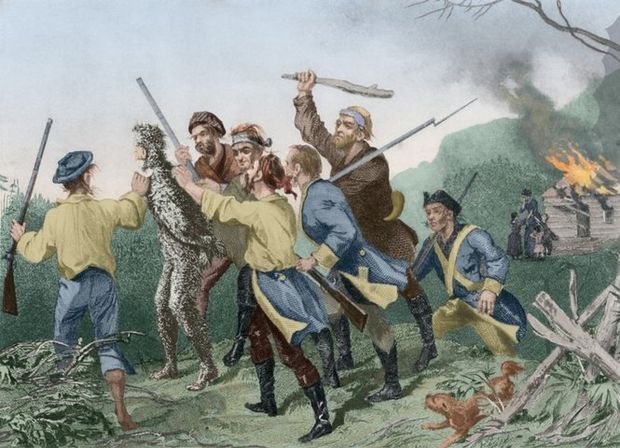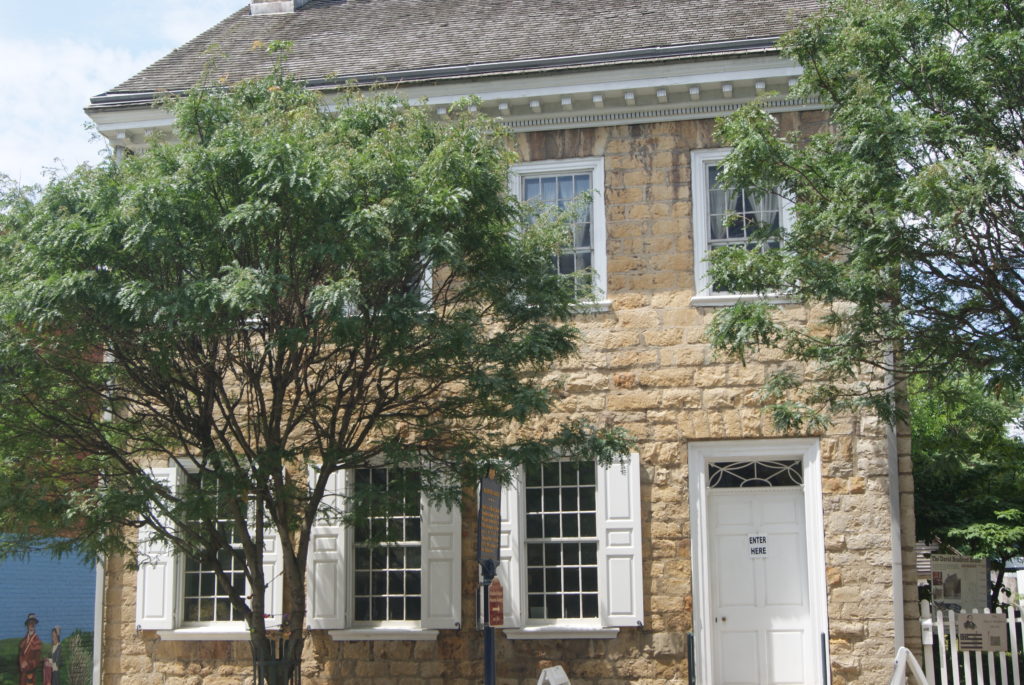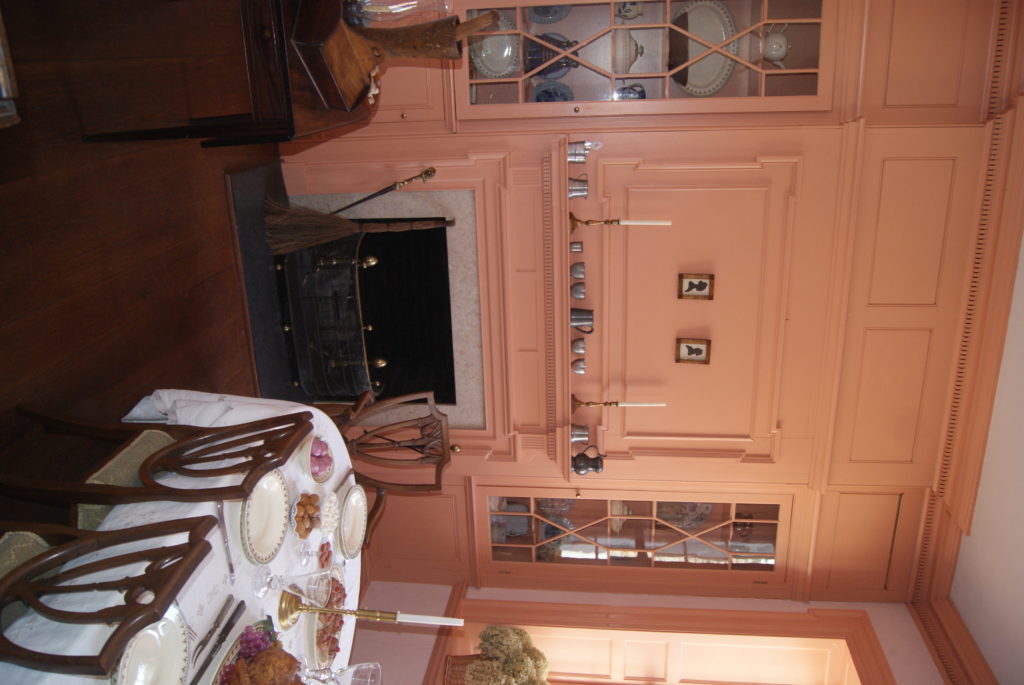
In rural Pennsylvania, resistance to high taxes and heavy-handed government drives political partisanship and mistrust of elites in the big cities. A description of early 21st-century politics? Well, yes, but it’s a description that has a long history in our state. I’m talking about the Whiskey Rebellion.
I promise that I will write a blog post on the Rebellion itself, soon. But as research the subject, I keep coming across colorful characters whose stories I feel I must tell before treating the Rebellion as a whole. My subject today is David Bradford: lawyer, big-time land-owner, conspirator, Revolutionary War general under Washington, and friend of the Marquis de Lafayette. Yes, another one. I’m starting to think there was hardly a landed gentleman anywhere in Pennsylvania who didn’t know the (apparently super-friendly) Marquis.
David Bradford comes to Western Pennsylvania
For decades, the colonies/states of Pennsylvania and Virginia had disputed their borders in the west. Finally, in 1781, Mason and Dixon drew their famous survey line in favor of Pennsylvania. That same year, David Bradford arrived in Washington County. Bradford was born in Elizabethtown, NJ, and raised in Maryland, but he had family connections in southwestern Pennsylvania. His family were founders of the academy that later became Washington & Jefferson College, and his sisters married prominent local attorneys. Bradford gained admittance to the bar and, by 1783, became Deputy Attorney General for Washington County.
He served in both the Pennsylvania and Virginia General Assemblies, by virtue of being a landowner in both states, In 1788, he married Elizabeth Porter and that same year built one of the first stone houses west of the Allegheny Mountains. More about the house later. Interestingly, he bought four slaves in 1789, but freed them in 1793. More about Bradford and slavery later, too.
The Whiskey Rebellion
Call me crazy, but, so far, Bradford’s life story sounds to me like he was a guy who would definitely not be rocking any boats – let alone escaping in one. He doesn’t sound like someone who would lead a rebellion and become a fugitive from justice.
But David Bradford was an independent thinker. In the early 1790’s, he increasingly disapproved of the centralized-government approach of Washington, Hamilton and the other Federalists. Of particular concern in southwestern Pennsylvania was the excise tax on whiskey. Congress approved the tax on March 3, 1791, and by 1794 several Pennsylvania counties were in full-blown rebellion.
Bradford whole-heartedly agreed with the rebellion and assumed leadership of the insurrection in Washington County. In early August of 1794, he led a militia of 5-7000 men on a march to Pittsburgh to protest the tax.
That had President Washington gnashing his wooden teeth. Washington ordered a federal militia to the west to put down the rebellion, and led the troops himself as far as Bedford, PA.

Bradford’s escape
Legend has it that Bradford escaped out a back window of his house mere minutes before Alexander Hamilton knocked at his door to arrest him. He galloped by horse to McKees Rocks, where he set off down the Ohio River by boat, firing shots at his federal pursuers on the shore.
The real story is both more boring and more interesting. Bradford made his way rather leisurely to Pittsburgh on the advice of friends,. He sailed down the Ohio from there, completely unmolested by federal troops, who apparently had no interest in inflaming the situation by arresting a prominent local attorney and former member of the Pennsylvania General Assembly.
Bradford’s departure may not even have been motivated by imminent arrest. Around the same time as the rebellion, Bradford had argued a case that an enslaved Washington man ought to be freed because his owner had failed to properly register him. He won the case and the embittered slave-owner threatened him with death.
Regardless of his motivations, Bradford escaped the justice of the young U.S. government by re-settling in Spanish Louisiana. In 1797, he completed construction of a new home, which he originally named Laurel Grove and is now called The Myrtles Plantation. It is reputed to be haunted; if you’re interested in that sort of thing, read more HERE. Once the house was completed, he brought his wife and their five children from Pennsylvania to Louisiana, where he and Elizabeth had five more children.
Bradford’s later life
Elizabeth Bradford repeatedly petitioned George Washington to pardon her husband. But Bradford remained a fugitive from justice until 1799, when President John Adams issued a pardon. Meanwhile, though, Bradfod prospered in Spanish Louisiana. By the time he died of yellow fever in 1807, he owned 1050 acres in Louisiana, 3155 in Pennsylvania, 4282 in Virginia, 2000 in Kentucky and 9000 in Ohio. Apparently, a little boat-rocking doesn’t do much damage to land-rich lawyers!
In the early 1800s, Bradford sold the stone house on Main Street in Washington, PA, but it still stands. After stints as a general store, a furniture store and home to the 19th-century American Realist novelist Rebecca Blaine Harding Davis, the house was beautifully restored in the 1960s and named an historic landmark.
The David Bradford House: a Whiskey Rebellion site

Bradford house exterior 
Parlor 
Dining room
Al and I had a delightful time touring the house and gardens last week. The log cabin in back of the house is not the original log cabin where Bradford conducted his law business, but it is an 18th-century Washington log cabin moved from elsewhere. Our tour guide, Laney Seirsdale, was friendly, enthusiastic and very knowledgeable, and shared with us many tidbits of information about Bradford, the house, and life in late-18th-century Pennsylvania. And the tour cost only $5! Afterward, we had a very nice lunch at a bakery/café down the street Chicco Ballacco. I’m become kind of a connoisseur of iced chai lattes during this overheated summer, and theirs is among the best.
The Bradford House is located at 175 S. Main St., Washington, PA.
Stay tuned for my post on the Whiskey Rebellion. It’s coming, I promise! Meantime, in case you missed it, here’s a link to my previous post on Albert Gallatin.
Sources
Bradford House Historical Association; The Bradford House: A National Historic Landmark; Washington, PA; 2015
https://en.wikipedia.org/wiki/Whiskey_Rebellion
http://www.maptherebellion.com/neatline/show/the-whiskey-rebellion#records/10

Very Interesting! I look forward to future articles.
Thank You,